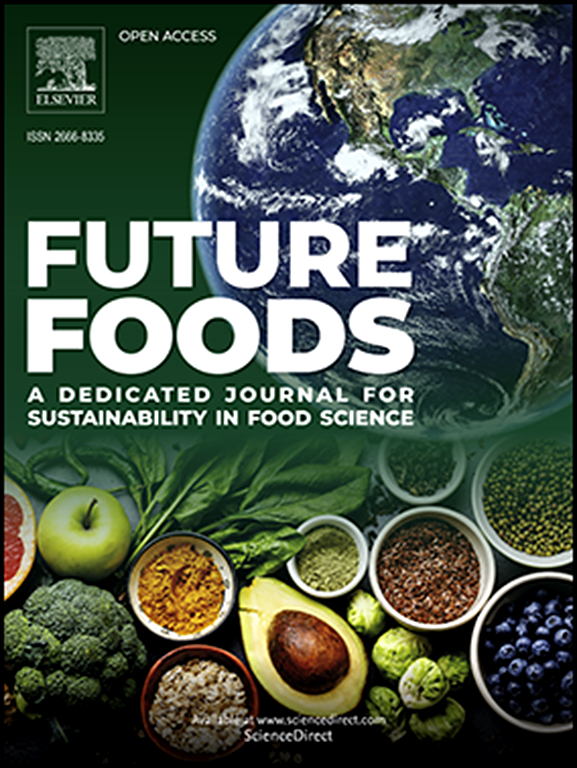Mapping the research landscape of meat replacers in Romania: A bibliometric analysis and a cross-cluster synergy model of emerging trends
IF 8.2
Q1 FOOD SCIENCE & TECHNOLOGY
引用次数: 0
Abstract
Meat replacers are gaining global relevance as sustainable solutions to reduce environmental impact, improve public health and address animal welfare concerns. In Romania, these developments are particularly important, given the country's dietary habits and the growing emphasis on sustainable food systems. Consequently, the first objective is to systematically map the scientific literature using the VOSviewer software by analyzing publications from the Web of Science Core Collection. This bibliometric analysis identifies four major thematic areas, providing a foundation for the second objective. Building on this mapping, the second objective is to illustrate the interconnectedness of key research areas. To this end, a Cross-Cluster Synergy Model (CCSM) was developed, which synthesized the relationships between thematic clusters. Findings show that while much of the research in Romania focuses on integrating alternative proteins into livestock feed, fully plant-based products and synthetic meat remain underexplored. There are also knowledge gaps regarding the long-term health impacts and consumer acceptance of meat substitutes. Further research is needed on consumer acceptance, long-term health effects and the scalability of meat substitutes to drive innovation and sustainable practices. By mapping relationships, the CCSM provides a comprehensive understanding of how different research domains interact to drive innovation in meat replacers field.

绘制罗马尼亚肉类替代品的研究景观:文献计量学分析和新兴趋势的跨集群协同模型
作为减少环境影响、改善公共卫生和解决动物福利问题的可持续解决方案,肉类替代品正在获得全球相关性。在罗马尼亚,考虑到该国的饮食习惯和对可持续粮食系统的日益重视,这些发展尤为重要。因此,第一个目标是使用VOSviewer软件通过分析Web of Science Core Collection的出版物来系统地绘制科学文献图。这个文献计量学分析确定了四个主要的专题领域,为第二个目标提供了基础。在此地图的基础上,第二个目标是说明关键研究领域的相互联系。为此,本文建立了一个跨集群协同模型(CCSM),该模型综合了主题集群之间的关系。研究结果表明,虽然罗马尼亚的大部分研究都集中在将替代蛋白质纳入牲畜饲料中,但完全基于植物的产品和合成肉仍未得到充分探索。在长期健康影响和消费者对肉类替代品的接受程度方面也存在知识缺口。需要对消费者接受度、长期健康影响和肉类替代品的可扩展性进行进一步研究,以推动创新和可持续做法。通过绘制关系图,CCSM提供了对不同研究领域如何相互作用以推动肉类替代品领域创新的全面理解。
本文章由计算机程序翻译,如有差异,请以英文原文为准。
求助全文
约1分钟内获得全文
求助全文
来源期刊

Future Foods
Agricultural and Biological Sciences-Food Science
CiteScore
8.60
自引率
0.00%
发文量
97
审稿时长
15 weeks
期刊介绍:
Future Foods is a specialized journal that is dedicated to tackling the challenges posed by climate change and the need for sustainability in the realm of food production. The journal recognizes the imperative to transform current food manufacturing and consumption practices to meet the dietary needs of a burgeoning global population while simultaneously curbing environmental degradation.
The mission of Future Foods is to disseminate research that aligns with the goal of fostering the development of innovative technologies and alternative food sources to establish more sustainable food systems. The journal is committed to publishing high-quality, peer-reviewed articles that contribute to the advancement of sustainable food practices.
Abstracting and indexing:
Scopus
Directory of Open Access Journals (DOAJ)
Emerging Sources Citation Index (ESCI)
SCImago Journal Rank (SJR)
SNIP
 求助内容:
求助内容: 应助结果提醒方式:
应助结果提醒方式:


